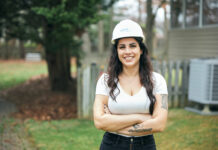Tempted by the cheap airfare displayed on my computer screen, I wondered aloud if we could, or should, plan a trip to San Francisco three weeks out.
“Sure. We could finally go to Yosemite National Park,” my husband, Kevin, said.
I’ve visited San Francisco often enough to know its summer streets are crammed with tourists shivering in the cold weather they didn’t expect. And Yosemite? At the last minute?
“Impossible,” my friend, Felicia Sapp, asserted. “You’ll never find a place to stay.”
Except for low airfare, the trip had nothing going for it: wrong season, no advance planning and a one-week time limit. It would be our 14-year-old son Max’s first visit to California, and I worried his first impression of this iconic city would be one of pervasive fog.
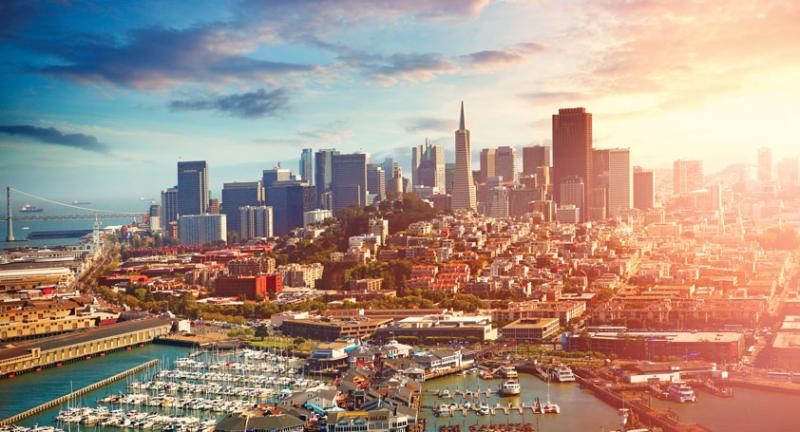 I’d discounted, however, one advantage: expert advice. For the past 15-plus years, San Francisco-based friends have shared their apartment keys and California know-how. Felicia, an emergency-room doctor, is an avid Yosemite hiker who recently returned from a 16-day adventure on the John Muir Trail. Her husband, Barry Beach, an artist and art professor, is the biggest San Francisco foodie I know. And Robert Strong, who grew up in Frederick County, is a comedian-magician-performer and Ted Talk-er whose phone never stops ringing. My husband and I call him “the mayor” for his knowledge of everyone and everything in San Francisco. With these friends in mind, I bought the tickets. The following local advice guided our spontaneous trip.
I’d discounted, however, one advantage: expert advice. For the past 15-plus years, San Francisco-based friends have shared their apartment keys and California know-how. Felicia, an emergency-room doctor, is an avid Yosemite hiker who recently returned from a 16-day adventure on the John Muir Trail. Her husband, Barry Beach, an artist and art professor, is the biggest San Francisco foodie I know. And Robert Strong, who grew up in Frederick County, is a comedian-magician-performer and Ted Talk-er whose phone never stops ringing. My husband and I call him “the mayor” for his knowledge of everyone and everything in San Francisco. With these friends in mind, I bought the tickets. The following local advice guided our spontaneous trip.
Think Outside the Square
We lost the option of crashing for free in San Francisco when our friends reluctantly assumed that mantle of adulthood — purchasing a home. All successful professionals with respectable family incomes, not one of them could afford a home inside the city limits.
The tech industry renaissance that gave the world Google and Uber gave San Franciscans a mushrooming housing market that recently pushed the median home price to $1.3 million. “Rent and real estate,” Robert says, “are the topics of 99 percent of locals’ conversations. The other 1 percent is about the long weekend brunch lines.”
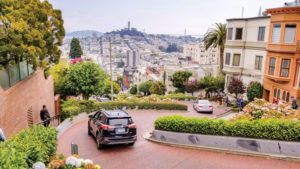 We found a room in town at the inexpensive, quirky, 1920s-era Mayflower Hotel. We wanted to stay near the Powell Street cable car/Chinatown/North Beach area. Generally, a hotel in Union Square will suffice, but we didn’t need to stay at a chain hotel parked amid chain stores in this crowded tourist hub. It was probably too late to book one of those anyway. The Mayflower sits at the base of Nob Hill, closer to the Tenderloin District than most tour guides recommend. Felicia makes a point worth repeating: Despite its tasty name, the Tenderloin District is home to tent cities, crime and sidewalk feces that are probably human, but why linger and find out?
We found a room in town at the inexpensive, quirky, 1920s-era Mayflower Hotel. We wanted to stay near the Powell Street cable car/Chinatown/North Beach area. Generally, a hotel in Union Square will suffice, but we didn’t need to stay at a chain hotel parked amid chain stores in this crowded tourist hub. It was probably too late to book one of those anyway. The Mayflower sits at the base of Nob Hill, closer to the Tenderloin District than most tour guides recommend. Felicia makes a point worth repeating: Despite its tasty name, the Tenderloin District is home to tent cities, crime and sidewalk feces that are probably human, but why linger and find out?
Sure, the Mayflower’s old-fashioned elevator could fit two people and a suitcase, only if the two people worked cooperatively to bend Tetris-like around the suitcase, and electrical outlets were maddeningly scarce. But we were happy with our find. From our hotel, we could walk three blocks east down Bush Street to Powell — and ride the cable car without waiting in line.
Skip the Cable Car Line
If you start at Union Square, you’ll stand in an interminable line to ride the cable car. From Bush Street, and all stops on Powell north of Union Square, you can just stand on the corner and hop on when the car stops mid-intersection. You may not get to sit down, but Robert points out, “taking fun videos and action selfies” is the fun part. My son concurred, hanging outside the car (just like the garbage collectors he revered in his youth) while Instagramming. At $7 per person — cash and exact change only — Robert calls it “overpriced, but worth it.”
At sfcityguides.org, there are free walking tours. But our teenager wanted to ride a Segway, so off we Segged our way through Fisherman’s Wharf to Ghirardelli Square, along the waterfront for fog-obscured almost-views of the Golden Gate Bridge. (It is perhaps inevitable the fog has its own Instagram page, answering to the name “Karl.” Sample update: “I woke up hungry so I ate the whole city.”)
After we reached the Palace of Fine Arts, our guide, who feared neither traffic nor tourist hordes, led us down Lombard Street, the “crookedest street in the world,” visited by 17,000 people per day in peak months. All 17,000 appeared to be videotaping me as I inched, squeaking in terror, down the plummeting hill with my Segway brake jammed into my ribs.Having covered a lot of tourist ground quickly (and for me, fearfully), we bought chowder on the wharf and dodged roving gangs of thieving seagulls. One thuggish bird plucked an entire bread bowl from a woman’s hands and flew away with it as she screamed. Max loved the (free!) Musee Mechanique with its collection of antique arcade games.
Eat Your Way through the City
Barry’s devotion to food is the reason I befriended him. When he and Felicia moved to San Francisco, he knew he’d reached his true home: the city that invented the farm-to-table movement. He advises cramming in as many meals as you can.
In Chinatown, Barry and Felicia recommended Hunan House, with its tiny, warm dining room packed with Chinese families. Max and Kevin, adventurous eaters, perused authentic offerings like “special pig knuckles” and “chili oil pork intestines,” while I stuck with eggplant and rice. In North Beach, there’s some of the best pizza I’ve ever eaten at Tony’s Napoletana Pizza and Il Casaro
Pizzeria and Mozzarella Bar, focaccia at Liguria Bakery and cannolis bigger than our heads at Stella’s Bakery. In the Mission District for our last night, we headed for Valencia Street, sampling from Dandelion Chocolate, Bi-Rite Creamery, the Tartine Bakery and Pancho Villa Taqueria.
Know Your Golden Gates
The Golden Gate Bridge is not part of Golden Gate Park. The bridge is part of the Golden Gate National Recreation Area, which includes the bridge, the Presidio and Alcatraz and spans the bay into the Marin Headlands and Muir Woods. Alcatraz requires reservations weeks in advance. Be careful when you book: Only the national recreational area’s official vendor is allowed to dock on the island. Read cruise offers carefully, lest you end up on a boat that only circles the island without a permit to land. Golden Gate Park is a rectangular city park that comprises more than 1,000 acres (larger than Central Park) and is home to gardens, green spaces and museums. It also requires less planning and is a great place to rent a bike.
Don’t Circle the Block at the Selfie Spots
Skip the car rental in San Francisco. Practically every other car on the street is an Uber or Lyft, so you’ll never wait long for a ride, and parking is scarce. This is especially true at two San Francisco selfie spots: Alamo Park, overlooking the Victorian homes known as the Painted Ladies, and Twin Peaks, the two hills that offer views over the entire bay area. If you, for instance, have a teenage son with an apparent selfie quota mandated by Instagram, save yourself the agony of circling the block for an hour and use Uber or Lyft.
Skip the Tourist Traps … Unless You Love Them
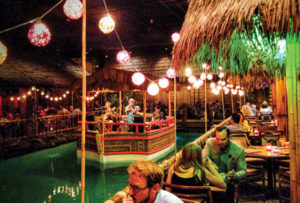 One man’s tourist trap is another man’s Tonga. Once known as The Tonga Room, this enduring legend of a hotel tiki bar in Nob Hill’s Fairmount Hotel almost closed a few years back. Thank goodness it endured. For over 50 years, this bar built around an old swimming pool features elaborate Polynesian kitsch and serves up tropical drinks that taste like dishwater. A floating stage allows the live band to motor around the pool. The music trends heavily toward 1970s radio hits, and sometimes, as you twirl your paper umbrella in your watered-down drink and the band slowly floats up to your table crooning Andy Gibb tunes, you may wonder if you’ve drunk yourself back into a previous century. You haven’t. You are in Tonga. No local would ever show their face here. I don’t care. I also love the Beauty Bar in the Mission District for its $15 martini-and-manicure, although the manicure is kind of horrifying. (Keep expectations low for that, and really, any manicure offered in a low-lit dive bar.) And my favorite San Francisco nights include a stop at the bar atop the Kimpton Sir Francis Drake Hotel for dancing, drinks and incredible views of the city.
One man’s tourist trap is another man’s Tonga. Once known as The Tonga Room, this enduring legend of a hotel tiki bar in Nob Hill’s Fairmount Hotel almost closed a few years back. Thank goodness it endured. For over 50 years, this bar built around an old swimming pool features elaborate Polynesian kitsch and serves up tropical drinks that taste like dishwater. A floating stage allows the live band to motor around the pool. The music trends heavily toward 1970s radio hits, and sometimes, as you twirl your paper umbrella in your watered-down drink and the band slowly floats up to your table crooning Andy Gibb tunes, you may wonder if you’ve drunk yourself back into a previous century. You haven’t. You are in Tonga. No local would ever show their face here. I don’t care. I also love the Beauty Bar in the Mission District for its $15 martini-and-manicure, although the manicure is kind of horrifying. (Keep expectations low for that, and really, any manicure offered in a low-lit dive bar.) And my favorite San Francisco nights include a stop at the bar atop the Kimpton Sir Francis Drake Hotel for dancing, drinks and incredible views of the city.
Get Out of Town
At Barry and Felicia’s home in Marin County, we drew up plans for our still hypothetical visit to Yosemite National Park. The park’s west entrance had reopened, but online pictures of rangers wearing gas masks didn’t inspire hope. Both Glacier Point and the Mariposa Grove of sequoias remained closed.
We stayed at Cedar Lodge in El Portal, a town just outside the park on Route 140. Encouraged by Felicia, we drove into Yosemite Valley on Route 120. We’re glad we listened, if only for the sweeping views the route afforded. As we approached the valley, wafts of smoke that looked like campfires
dotted the hills, and the air, though clear, smelled like burning pine.
We followed an itinerary from Felicia that included a car ride on Tioga Road to Tuolumne Meadows and a hike to Nevada Falls. My son, learning the hotel Wi-Fi had been knocked out by the fires, predicted Yosemite would be
psychological torture. But with Felicia’s itinerary, he didn’t complain once, except to note the pictures he took of the views and wildlife “didn’t do it
all justice.”
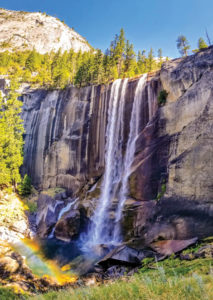 On the way to Tuolumne Meadows, we stopped in the Tuolumne grove of ancient sequoias. There, I learned these trees can live thousands of years, surviving multiple fires, pestilence and plague. What keeps them alive? Their roots, which intertwine with the roots of their sequoia neighbors. These bonds hold one another up. They are strengthened by their community, and when one topples, the whole community feels the loss. They can’t die of old age, but they can die of the tree version of what humans might call loneliness.
On the way to Tuolumne Meadows, we stopped in the Tuolumne grove of ancient sequoias. There, I learned these trees can live thousands of years, surviving multiple fires, pestilence and plague. What keeps them alive? Their roots, which intertwine with the roots of their sequoia neighbors. These bonds hold one another up. They are strengthened by their community, and when one topples, the whole community feels the loss. They can’t die of old age, but they can die of the tree version of what humans might call loneliness.
In that grove, I silently thanked my friends for their generosity, guidance and hand-drawn maps. The trees’ entwined roots reminded me to keep reaching out and connecting whenever the opportunity presented itself — even if the opportunity is last minute and hastily planned. Maybe if we said yes more often. we’d all, like the sequoia, live longer and stronger for it.



